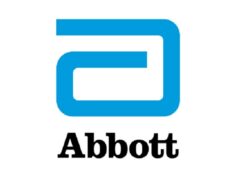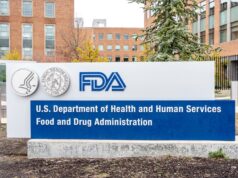
Fred Morady spoke to Cardiac Rhythm News about his influences, areas of research, and activities outside medicine: building furniture at home and downsizing to a Cessna 182. Morady is professor of internal medicine, McKay Professor of Cardiovascular Disease, University of Michigan, Ann Arbor, US.
Why did you decide to specialise in cardiac electrophysiology?
I decided to go to medical school early on in high school. I became very interested in arrhythmias when I was a medical resident at University of California, San Francisco (UCSF), largely because of exposure to Mel Scheinman, my mentor at the time.
Who have been your greatest influences?
I have been fortunate to have two mentors who were major influences in my academic life. The first was Dr Michael Laks. I started working in his experimental laboratory at Cedars of Lebanon Hospital in Los Angeles when I was still a high school student in 1967. I started out as a laboratory assistant. My responsibilities quickly expanded during the four years that I worked with Dr Laks. He spent a tremendous amount of time with me, reviewing and interpreting data and teaching me how to express my thoughts clearly and concisely. By the time I finished my undergraduate training at University of California, Los Angeles, I had several publications in major journals, including a firstauthor paper in the American Journal of Physiology, all thanks to Dr Laks. Mel Scheinman at UCSF was the second major influence in my academic life. He was a tremendous teacher and mentor during the five years that I trained and worked with him. I am lucky that at least a bit of his passion for analysing complex arrhythmias, and for teaching, rubbed off on me.
What have been your proudest moments?
I derive the most pride from knowing that I played a role in the training or career development of many incredibly talented individuals during the past 25 years at the University of Michigan. It has been a joy to be able to work with so many electrophysiology fellows and junior faculty who have gone on to have very successful careers in academic medicine or clinical practice.
How has electrophysiology evolved since you began your career? Where do you see this field going in the next ten years?
In 1980, clinical electrophysiology was a diagnostic specialty. I was very fortunate to be in the right place at the right time when Dr Scheinman performed the first catheter ablation procedure at UCSF in 1981. Since then, the field of catheter ablation has expanded tremendously and clinical electrophysiology has largely become an interventional specialty.
How far do you think it is possible to go with regard to advances in drugs for arrhythmias?
There are many potential opportunities for improving antiarrhythmic drug therapy. One example would be a drug that exerts an effect on a specific channel in a specific chamber, only during a particular range of heart rates.
Your team at the University of Michigan has wide experience in catheter ablation. What impact has the technique had in the treatment of arrhythmias?
Countless numbers of patients have benefited from having their arrhythmias eliminated by catheter ablation. There is still a lot of room to improve ablation strategies and the tools that we use for catheter ablation.
Tell us about one of your most memorable clinical cases.
My most memorable cases are the patients whose lives have drastically improved because of a successful catheter ablation procedure. These are patients whose quality of life was very poor and who are able to resume a normal life style. This includes the athletes that I have treated, some of whom have gone on to have very successful professional careers.
What are your current areas of research?
Our current research efforts are focused on gaining a better understanding of the mechanisms of atrial fibrillation and identifying the most efficient and effective ablation strategies for this very complex arrhythmia.
What would you say to a young doctor that is thinking of specialising in electrophysiology?
Clinical electrophysiology is a great field. Anyone who likes solving puzzles would enjoy the challenge of figuring out difficult arrhythmias in the electrophysiology lab. Clinical electrophysiology is challenging and fun because it requires both cognitive skills and technical skills. Plus, we get the chance to save lives with ICDs and to make people’s lives better by catheter ablation. The ability to cure patients whose quality of life has been impaired by arrhythmias is very gratifying.
Outside of medicine, what other interests do you have?
My two passions outside of medicine are woodworking and flying. I have built most of the furniture in our home over the past 25 years and look forward to building a lot of furniture for my two daughters. I have been flying since 1981 and have a commercial pilot’s license. After flying a Cessna 210 for about 15 years, I recently down-sized to a Cessna 182, which is a lot of fun to fly.
Fact file
Education and training
1967–1971 University of California, Los Angeles, US; BA
1971–1975 University of California, San Francisco, US; MD
Postdoctoral training
1975–1976 Internship in internal medicine, University of California, San Francisco
1976–1978 Residency in internal medicine, University of California, San Francisco
1978–1980 Fellowship in cardiology, University of California, San Francisco
Academic appointments
1967–1972 Research assistant, Cardiology Research Laboratory, Cedars-Sinai Medical Center
1980–1981 Clinical instructor in residence, Department of Medicine, Division of Cardiology, Moffitt Hospital, University of California
1981–1984 Assistant professor of medicine, Moffitt Hospital
1983–1984 Director, Clinical Electrophysiology Laboratory, Moffitt Hospital
1984–2004 Director, Clinical Electrophysiology Laboratory, Department of Internal Medicine, Division of Cardiology, University of Michigan
1984–1987 Associate professor of internal medicine, University of Michigan
1987–Present Professor of internal medicine, University of Michigan
2003– McKay Professor of Cardiovascular Disease, University of Michigan
2004–2006 Director, Clinical Electrophysiology Service, University of Michigan
Honors and awards
Distinction in Research and Teaching Award, from the Faculty in Electrocardiography & Arrhythmia Studies, University of California, San Francisco, 2001
Michel Mirowski Award of Excellence in the Field of Clinical Cardiology and Electrophysiology; Baltimore, Maryland, 2002
University of Michigan Medical School Achievement in Clinical Research, 2002
Distinguished Teacher Award, Heart Rhythm Society, 2004
JACC Journals Simon Dack Award for Outstanding Scholarship, Orlando, 2009
Memberships
Fellow, American College of Cardiology; member, North American Society of Pacing and Electrophysiology; member, American Society for Clinical Investigation; member, Association of American Physicians.
Editorial boards
The American Journal of Cardiology, Journal of Electrophysiology (1987–1989), Practical Cardiology (1987–1993), PACE, Journal of Cardiovascular Electrophysiology, Journal of the American College of Cardiology, Circulation, Journal of Cardiovascular Electrophysiology (1995-2004), Cardiology in Review (1998-2001), American Heart Journal, Arrhythmia Section Editor, Cardiology Journal Review, Journal Cardiovascular Pharmacology and Therapeutics, Heart Rhythm, Turkish Journal of Interventional Electrophysiology, Cardiosource Review Journal, Circulation: Arrhythmia and Electrophysiology.












